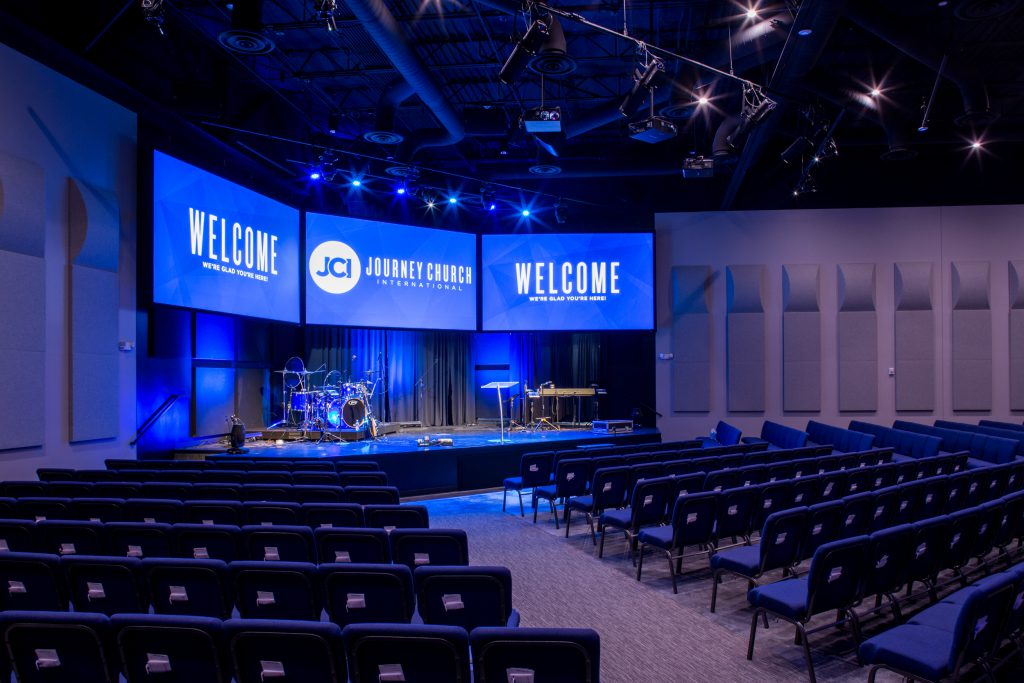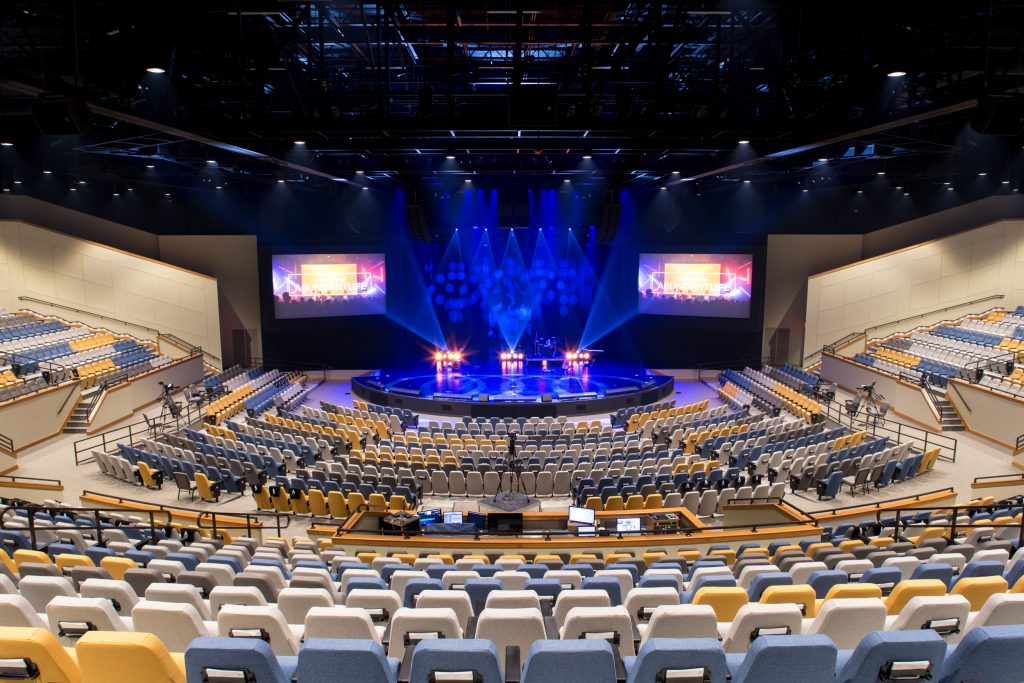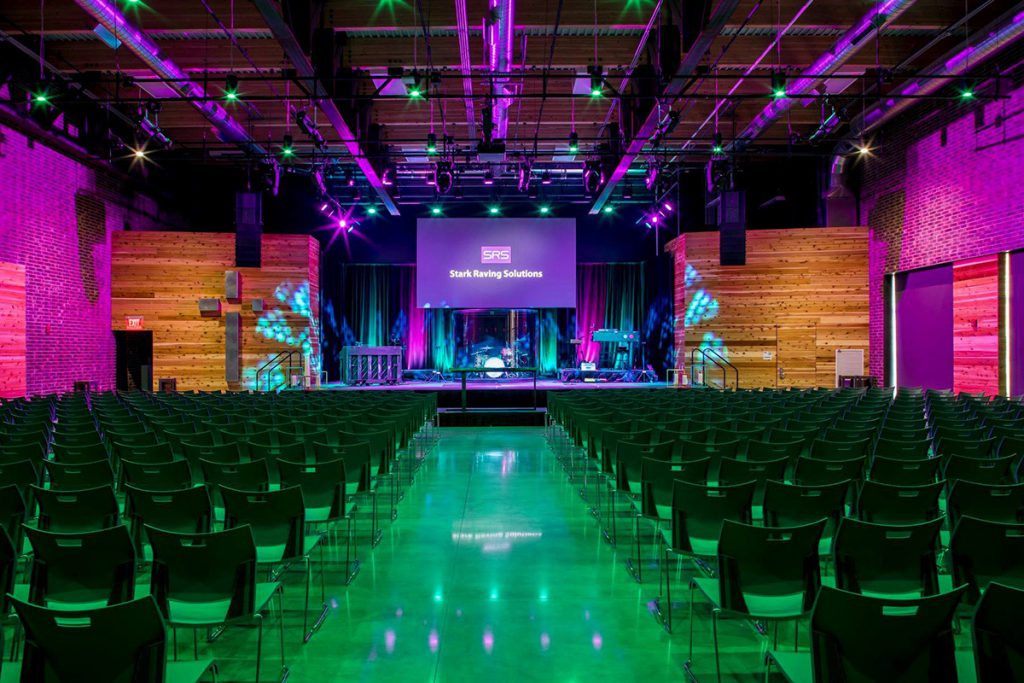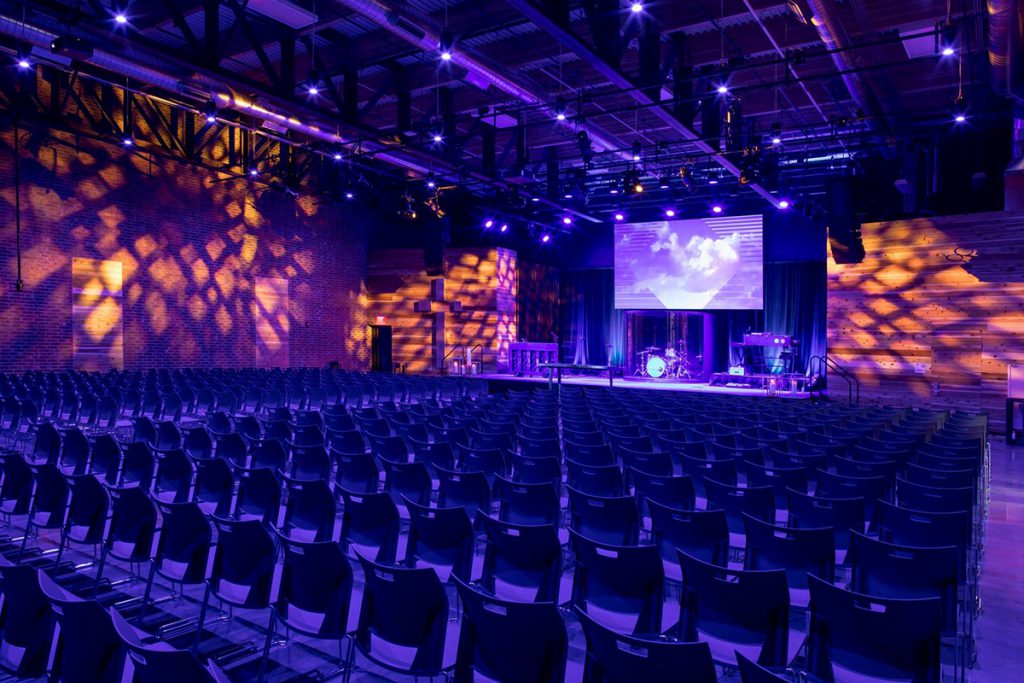Capturing Light
Posted on January 8, 2019
Photo: Emmalee Schaumburg
It’s been said that a lighting designer’s work is always in the moment. Like the rising sun or a shooting star, it dazzles, impresses, inspires…but in the end it can never be held on to. While it’s impossible to freeze a designer’s work in time, good photography can capture at least some of its essence, so that it may be preserved, admired and understood in the future.
Good photography, like good lighting design, never happens by accident but is the result of hard work, planning and talent. Like lighting design, photography never takes place in a vacuum. To work, it requires a deep understanding of its subject, which is why photographing a concert will be quite different than say shooting an event.
Emmalee Schaumburg has developed this level of understanding about photographing buildings, most notably houses of worship. Schaumburg came to our attention earlier this year when we saw her photos of Church of the Resurrection Downtown in Kansas City. We were struck by her richly textured rendition of the church; it was a quality that not only depicted the house of worship, but evoked a feeling of stepping inside its walls.
Intrigued, we asked Schaumburg, the owner of Emmalee Schaumburg photography in Lawrence, Kansas, to share some insights into capturing light in pictures.
Before you photograph a church, what are the first things you look at?
“When photographing a church, the first thing I ask for is a floor plan and set of elevations. Knowing what direction the entrance of the church faces is crucial in planning for the exterior images and making sure I have good natural light hitting the building. If the building is lit well with artificial lighting, then I usually incorporate images shot at night or dusk. Again, it depends on which direction the main entrance faces. I either shoot 30 minutes before dawn or 30 minutes after sunset to get the perfect exposure of the building and sky. Next, I look at the floor plan and ask the architect which rooms have large windows and plan accordingly so I don’t have sunlight casting harsh shadows in the room.”

Photo: Emmalee Schaumburg
There’s quite a difference between contemporary houses of worship with a lot of windows and ambient light and traditional churches. Does this influence your work as a photographer?
“My approach to photographing a traditional church compared to a more modern church is the same. Even though a traditional, older church might be dark inside it isn’t any different from photographing a new church that offers better lighting. The only thing that changes is my shutter speed, allowing more or less light in to create the perfect exposure. All of my architectural photographs are shot on a tripod utilizing a very slow shutter speed and keeping my aperture small to keep all features of the room in focus.”
When you photograph live services how do you balance getting the pastor or others on stage to look natural while still capturing the colors in the lighting design?
“The main thing to consider when balancing sanctuary lights and stage lights is that your white balance is set properly. I set it for the type of light that is hitting the stage. Any adjustments that need to be made to enhance the lighting is done in post- production.”
House of worship lighting involves much more color today than it did just a few years ago. What is the hardest color of light to get right in a photo? What is the easiest?
“I haven’t had any trouble with photographing different colors of lights. All colors can be achieved with the right exposure and color balance. Although, in my experience with photographing LED lights, a little more tweaking to the intensity of the light is required.”
So, what is the toughest challenge you face when lighting a church?
“The hardest part with photographing churches is dealing with dark areas of the room that don’t get a lot of light. In order to expose those areas properly, I bracket the image and layer in Photoshop to increase the brightness in those areas.”

Photo: Emmalee Schaumburg
How bright do you like the lights in a church to be when you photograph it? Do you like them at full brightness? Partial brightness?
“Many times the stage lights are much brighter than the house lights, so I usually have the lighting technician turn down the brightness of the stage lights and turn the house lights up to full brightness. Finding the right balance in the amount of light can be tricky sometimes, but it just takes time to get it right.”
What is the best thing a church can do for you before you begin photographing it?
“The best thing that a church can do before I come in to photograph it is to make sure everything is cleaned up and looking its best. If the sanctuary is a multipurpose sanctuary with moveable chairs, it’s best to make sure the chairs are in perfect order and the middle aisle is perfectly centered with the stage. If it’s not centered, it throws off the symmetry of the images I shoot straight on. Also, making sure a lighting tech is present during the shoot is vital.”
What is the most common mistake people make when photographing church lighting?
“The most common mistake when photographing churches is blowing out the highlights and losing detail. This includes over exposing the stage and the windows. In order to get the right exposure for those areas I bracket and layer my exposures in Photoshop. Bracketing is the process of creating multiple exposures of the same image, shot on a tripod, then layering those images in post-production. This enables me to pull in the details that would have otherwise been lost.”
How does lighting a house of worship differ from lighting a theatre or arena?
“I don’t use any flashes or strobes when photographing churches, theatres or arenas so my approach when it comes to lighting the room is the same. It just boils down to my shutter speed and ISO settings. However, when lighting a home, sometimes I will use an off-camera flash to light a room or hallway in the distance.”
What do you hope your photos convey when you photograph a church?
“In the end, I hope my images communicate the same experience that one would have in the sanctuary. Making sure the images look vibrant and as exciting as possible. This is achieved through bright, colorful lighting, using complementary color combinations, making sure the projection screens are displaying images that complement the lighting and utilizing haze machines if available. Sometimes in social spaces, like a café or lobby, I like to have people walking through the space to create motion.”

Photo: Emmalee Schaumburg